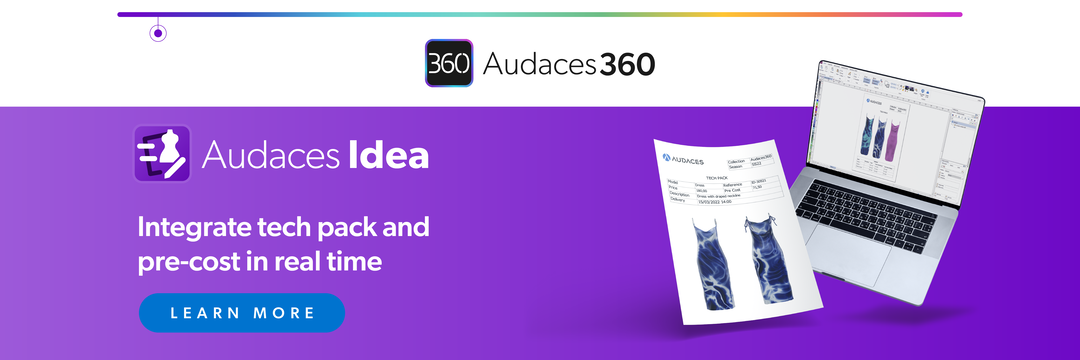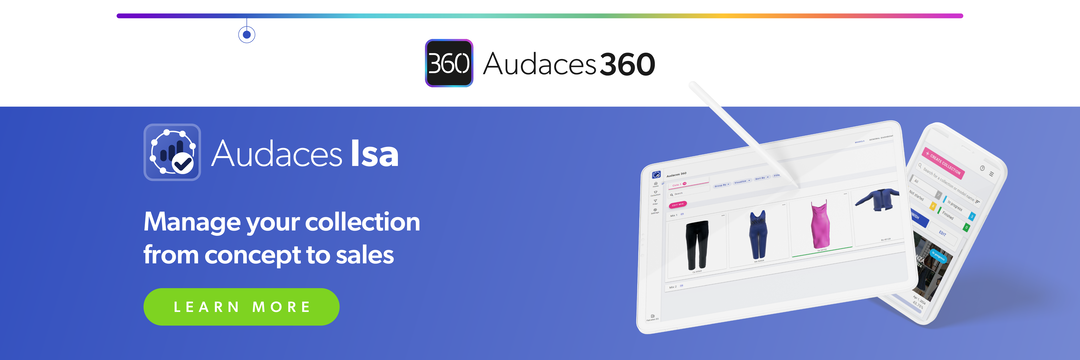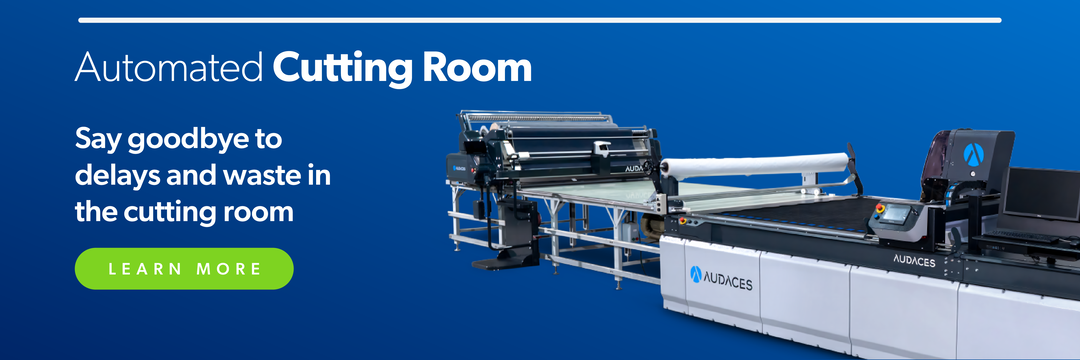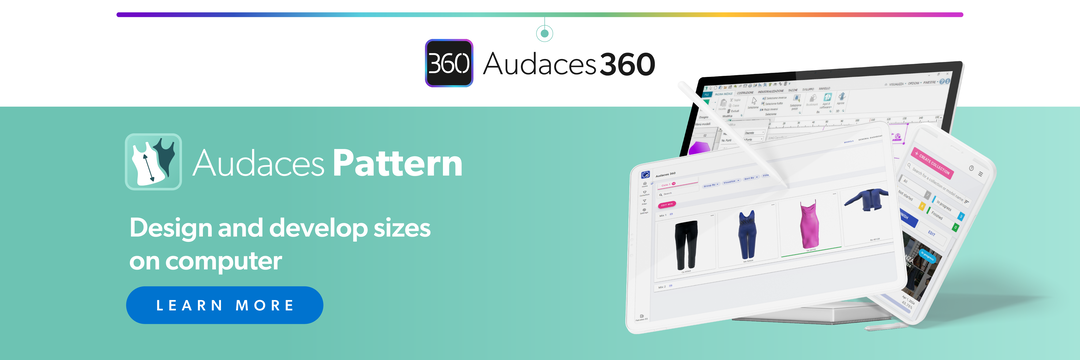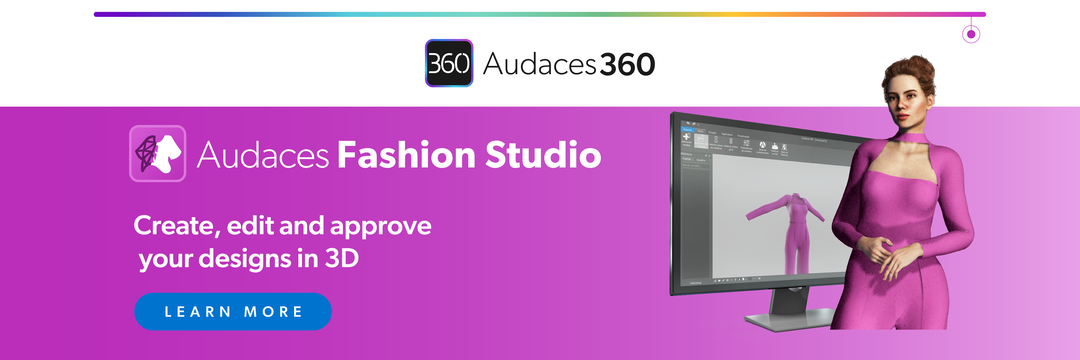Summary
- Designers who work for major brands already know it: to save time, the secret is to invest in a well-made clothing tech pack.
- This way their brands launch faster, with fewer mistakes, and are always ready for the next season.
- Experience the future of the fashion industry with Audaces360. Start your free trial today!
While great ideas are everywhere in the fashion world, only a few turn into successful collections. Want to know what makes the difference? Speed, clarity, and precision.
If you’re still creating tech packs with errors or missing info, you’re falling behind. While you fix problems, other companies are already producing and selling.
This article shows how to change that. You’ll find out how to create a clothing tech pack that’s clear, complete, and production ready.
If you want to stay ahead, read on!
Sumário
What is a clothing tech pack and what is it used for?
A clothing tech pack is a document that explains how to make a garment. It includes all the details about the design, materials, measurements, and production steps. This way, everyone involved in the process knows exactly what to do.
The goal of a tech pack is to avoid mistakes. It helps the designer, the pattern maker, and the factory work together smoothly. With it, you can save time, reduce waste, and make sure the final product matches the original idea.
Another common name for this document is spec sheet. Some brands or factories may use this term instead, but it means the same thing. Both relate to guiding the production of a piece from start to finish.
Using a tech pack makes your process more professional. It helps organize your collection, especially when dealing with several models at the same time.
Main types of clothing tech packs
There’s more than one type of clothing tech pack. Each one fits different needs, depending on how your team works and what stage of the process you’re in.
Let’s look at the most common formats used in the fashion industry:
General tech pack
A general tech pack brings together all the basic information about a garment. It includes flat sketches, fabric details, trims, labels, and measurements. This type of tech pack is simple and works well for small teams or early production stages.
It’s a good option when you want to give a clear idea of the product without going too deep into department-specific details. Everyone can understand it, from the designer to the sewing team.
Department-focused tech pack
This type of tech pack is more advanced. It breaks down the information by department, such as design, pattern making, cutting, sewing, and quality control. Each team gets exactly what they need.
The goal is to improve accuracy and speed. When the right people have the right details, they can work faster and avoid rework. It also makes tracking easier during each step of production.
A department-focused tech pack is great for larger operations or when you use outsourcing. It brings clarity and improves communication between all areas of the business.
How to choose the most suitable tech pack for your business?
Choosing the right tech pack depends on your team and workflow. If your business is small and your team handles many steps together, a general tech pack may be enough. It gives a full view of the product in one place.
But if you work with different departments or external partners, a department-focused tech pack is better. It provides each team with the exact information they need, which reduces mistakes and delays.
To make the best choice, think about how your company operates. The right tech pack should make your process easier, not more complicated.
Learn more: Choosing the best tech pack software for fashion production
Benefits of using a clothing tech pack in your apparel production
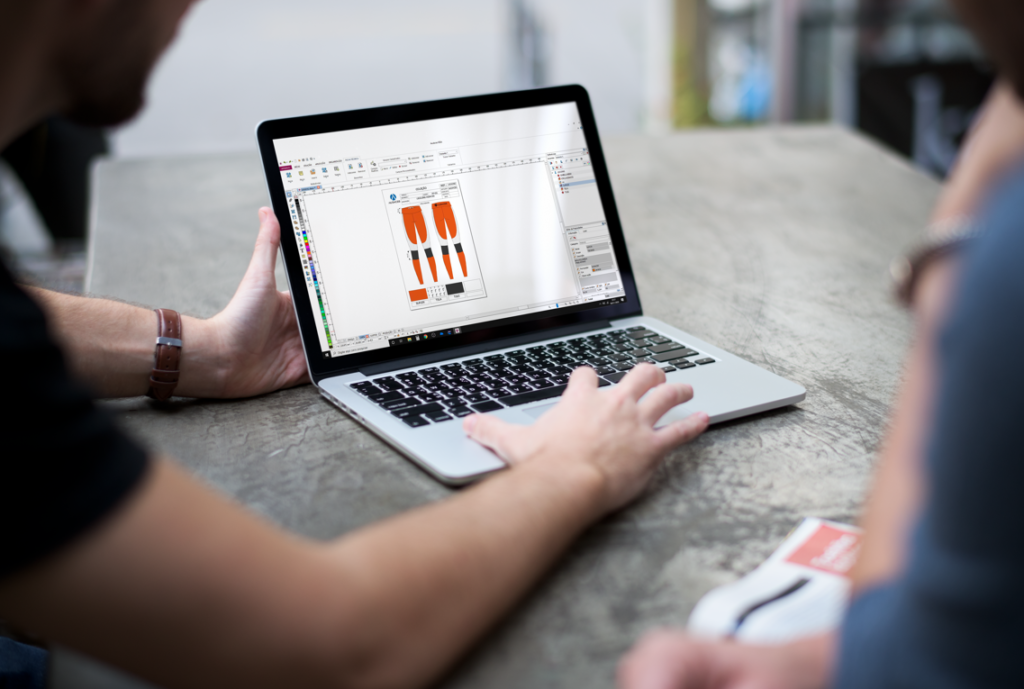
Documentation of every step
A clothing tech pack records all the steps necessary to make a garment. From fabric choice to size charts, everything is in a clear guide for your team to follow.
Having everything in one place makes it easy to track changes. If you need to update something, you can do it fast without losing important info. It also helps if you need to explain your product to new partners or suppliers.
This documentation is useful for future collections too. You can look back at past tech packs to repeat what worked or improve what didn’t.
Communicating the concept of the collection
A tech pack is not just about technical details, it also shows the idea behind the piece. Colors, prints, and design elements all help tell the story of your collection.
When your team understands the concept, they can make better choices. For example, the cutting team can be more careful with prints. Or the sewing team can follow special instructions with more attention.
Learn more: Learn what digital sketching is and how to apply it to your fashion collection
Standardizing processes
When you use tech packs, your team follows the same steps every time. This creates a clear routine and improves quality.
Moreover, it helps new team members learn faster. They can follow the tech pack and know what to do without needing extra training.
Learn more: 4 key steps to streamline your fashion production process
Defining costs
Adopting a clear tech pack also helps you plan how much each piece will cost. You can list the bill of materials, trims, and labor necessary to produce it.
With this info, you can make better decisions about pricing and profit. And the best part: it helps you avoid surprises during production.
Start creating the perfect clothing tech pack now with our exclusive resource. Download it for free!
How to build a clothing tech pack?
We created this simple list to help you build a complete tech pack. Check each part to make sure you haven’t missed any important details!
1) Header
The header is the first section of your clothing tech pack. It includes basic information like the product name, code, and collection. You can also add the version and date of the file.
This helps your team find the right file quickly. It avoids confusion when there are updates or different models.
If anything changes in the product, change the header too. That way, everyone works with the latest version.
2) Technical drawing
The technical drawing, or flat sketch, shows what the product looks like. It includes a front and back view of the garment. In some cases, you can also add side or detail views.
These drawings must be clear and simple. You don’t need colors or textures: just use clean lines and basic shapes to show the structure.
Learn more: How can smarter sketching optimize fashion designers’ work?
3) Raw materials
In this section, you’ll list all the materials necessary to make the garment. This includes fabric, lining, trims, thread, and buttons.
For each item, add the name, code, and color. You can also include the supplier’s name – after all, the more precise, the better.
4) Labeling
The labeling section shows all the tags that go with the garment. That can be the brand label, size tag, care label, and price tag.
It’s important to add pictures or mockups of each label. Explain where they should go and how to attach them. Don’t forget to include the material and size!
5) Printing and/or laundry details
If your garment has any print or wash effects, explain them here. It could be screen printing, embroidery, stone washing, or tie-dye.
Try to add mockups and placement guides. Be sure to mention the colors, dimensions, and techniques. You can even include references if you’d like.
These details are key to getting the final look right. Without them, the result can look different from what you had planned.
Learn more: Know the textile symbols and the meanings of the clothing labels
6) Size chart
The size chart shows the measurements for each size of the garment. This helps the pattern maker and factory follow the right dimensions.
List all key points, like bust, waist, hips, sleeve length, and inseam. Remember to add the values for each size in columns.
Learn more: Discover the features and benefits of an apparel size conversion chart
How to prevent mistakes when filling out a clothing tech pack?
Even small mistakes in a tech pack can lead to big problems later. That’s why it’s important to be careful with every detail.
Here are some tips to help you avoid common errors:
Avoid extra quantities of raw material
Always calculate how much material you really need. It’s good to have a margin of error but adding too much can lead to waste and higher costs.
Count on the support of technology to make markings to know fabric consumption and automatic pre-costing.
Make use of the notes section
Don’t underestimate the power of this small space: it can avoid big confusions. Use it to explain special requests or add extra instructions.
If something doesn’t fit in the main fields, write it here. For example, a specific stitch detail or a reminder about packaging.
Prioritize clear and accurate information
Always choose simple words and easy-to-read terms. This means avoiding long explanations or confusing phrases.
Also, try to be as accurate as possible. If a fabric is 97% cotton and 3% elastane, write it that way. Don’t round up or guess.
Clear information means fewer questions and fewer mistakes. It helps everyone stay aligned from design to delivery.
Create clothing tech packs for your collections with Audaces Idea
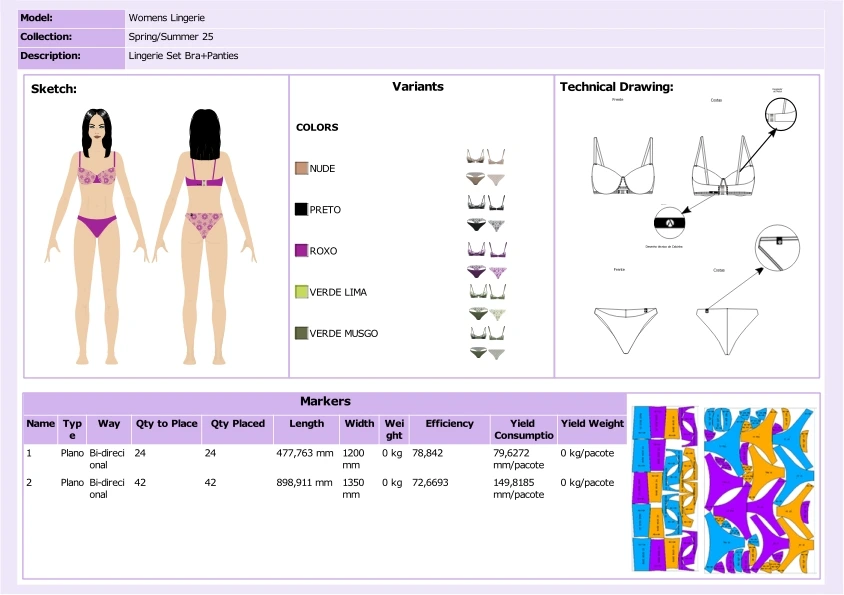
Audaces Idea is your solution for creating tech packs!
First, design, edit, and share your creations with team members in just a few clicks. Leverage the power of the best fashion technology to test colors, textures, and shapes.
Then, enjoy seamless integration with the tech pack and automatic pre-cost calculation. You can check all your products’ information on a single screen during the process, in real time.
It helps end errors and streamline communication between design and the other teams. This way, you can reduce the development cycle and ensure timely deliveries.
Discover Audaces360 and unlock a world of possibilities for fashion design and production. Explore our comprehensive suite of solutions today!
FAQ
A clothing tech pack is a document that explains how to make a garment. It includes all the details about the design, materials, measurements, and production steps. This way, everyone involved in the process knows exactly what to do.
If your business is small and your team handles many steps together, a general tech pack may be enough. But if you work with different departments or external partners, a department-focused tech pack is better.
They include documentation of every step, standardizing processes, and defining costs.


